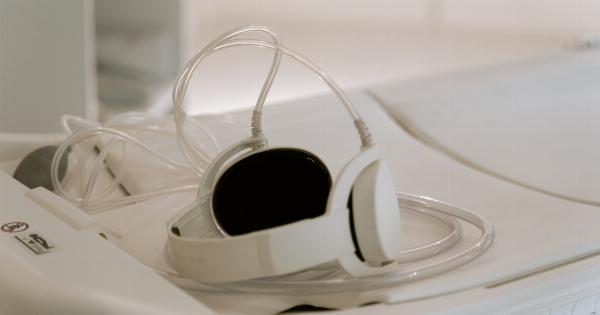An emergency C-section refers to the surgical delivery of a baby through an incision in the mother’s abdomen.
Unlike a planned or scheduled C-section, emergency C-sections are performed when complications arise during labor or delivery, posing a risk to the health and well-being of the mother or the baby.
Common Indications for Emergency C-section
There are several reasons why a healthcare provider may opt for an emergency C-section:.
Fetal Distress
During labor, healthcare professionals closely monitor the baby’s heart rate. If the heart rate becomes irregular or decelerates significantly, it may indicate that the baby is in distress.
In such cases, an emergency C-section may be necessary to expedite the delivery and ensure the baby’s safety.
Placental Complications
Placenta previa, placental abruption, or other placental abnormalities can potentially lead to life-threatening situations for both the mother and the baby.
In such cases, an emergency C-section is often the safest option to prevent excessive blood loss or oxygen deprivation to the fetus.
Prolonged Labor
If labor is not progressing as expected or if the cervix fails to dilate adequately despite strong and regular contractions, it may result in prolonged labor.
In some instances, an emergency C-section is performed to prevent complications such as infection or fetal distress.
Cord Prolapse
When the umbilical cord slips through the cervix and enters the birth canal before the baby, it can become compressed or compressed during contractions.
This condition, known as cord prolapse, is an emergency situation, as it can impair the baby’s oxygen supply. An immediate C-section is typically necessary to prevent further harm to the baby.
Breech Presentation
If the baby is in a breech position, meaning their buttocks are positioned to be delivered first, it can increase the risk of complications during vaginal delivery.
In such cases, an emergency C-section may be recommended to ensure the baby’s safe delivery.
Maternal Health Complications
Certain maternal health conditions may necessitate an emergency C-section. These conditions include severe preeclampsia, eclampsia, heart disease, or other medical emergencies that jeopardize the mother’s well-being.
Preparing for an Emergency C-section
Although an emergency C-section may not be anticipated, it is essential for pregnant women to be aware of the signs and symptoms that may warrant immediate medical attention:.
Contacting Your Healthcare Provider
It is crucial to have open communication with your healthcare provider throughout your pregnancy. If you experience any concerning symptoms or have questions about your pregnancy, do not hesitate to reach out to them immediately.
They can provide guidance on whether your symptoms require further evaluation or if any precautions should be taken.
Pack an Emergency Hospital Bag
It is wise to have a packed hospital bag ready well in advance of your due date.
Include essential items for yourself and your baby, such as comfortable clothing, toiletries, important documents, nursing supplies, and anything else you may require during your hospital stay. Having a prepared bag can save time and reduce stress if an emergency C-section becomes necessary.
Understanding the Procedure
An emergency C-section involves various steps:.
The Incision
An incision is made in the lower abdomen, usually along the bikini line. The type of incision may vary depending on the urgency of the situation and other factors deemed necessary by the healthcare provider.
Uterine Incision
Once the abdominal incision is made, an additional incision is made in the uterus. The location and shape of the uterine incision also depend on several factors, including the baby’s position and the urgency of the delivery.
Delivering the Baby
Following the uterine incision, the baby is gently guided out of the mother’s womb. The healthcare provider will take every precaution to ensure the baby’s safety during this process.
Placenta Delivery
After the baby is safely delivered, the healthcare provider will check for any remaining fragments of the placenta or membranes in the uterus. If necessary, they will remove them to minimize the risk of infection or complications.
Closing the Incisions
Once the baby and placenta are delivered, the healthcare provider will close the incisions with dissolvable stitches or staples. This helps promote healing and reduce the risk of infection.
Recovery and Aftercare
After the emergency C-section, the mother will be moved to a recovery area where she will be closely monitored. The healthcare provider will assess vital signs, watch for any signs of complications, and ensure the mother’s well-being.
Adequate rest, pain management, and proper wound care are essential during the recovery period. The mother may also receive assistance with breastfeeding and newborn care while in the hospital.
Emotional Considerations
An emergency C-section can be an emotional experience for pregnant women. It is common to feel a range of emotions, including relief, disappointment, or a sense of loss when the birth experience differs from your initial expectations.
It is crucial to give yourself time to process these emotions and seek support from your partner, loved ones, or healthcare professionals. Many hospitals have counselors or support groups available to provide guidance and reassurance during this time.
Conclusion
While many women hope for a smooth and uncomplicated vaginal delivery, an emergency C-section may become necessary to ensure the health and well-being of both the mother and the baby.
Understanding the indications for an emergency C-section, preparing for various scenarios, and being aware of the procedure and recovery can help pregnant women feel more informed and empowered in case they encounter this unexpected turn of events.




























